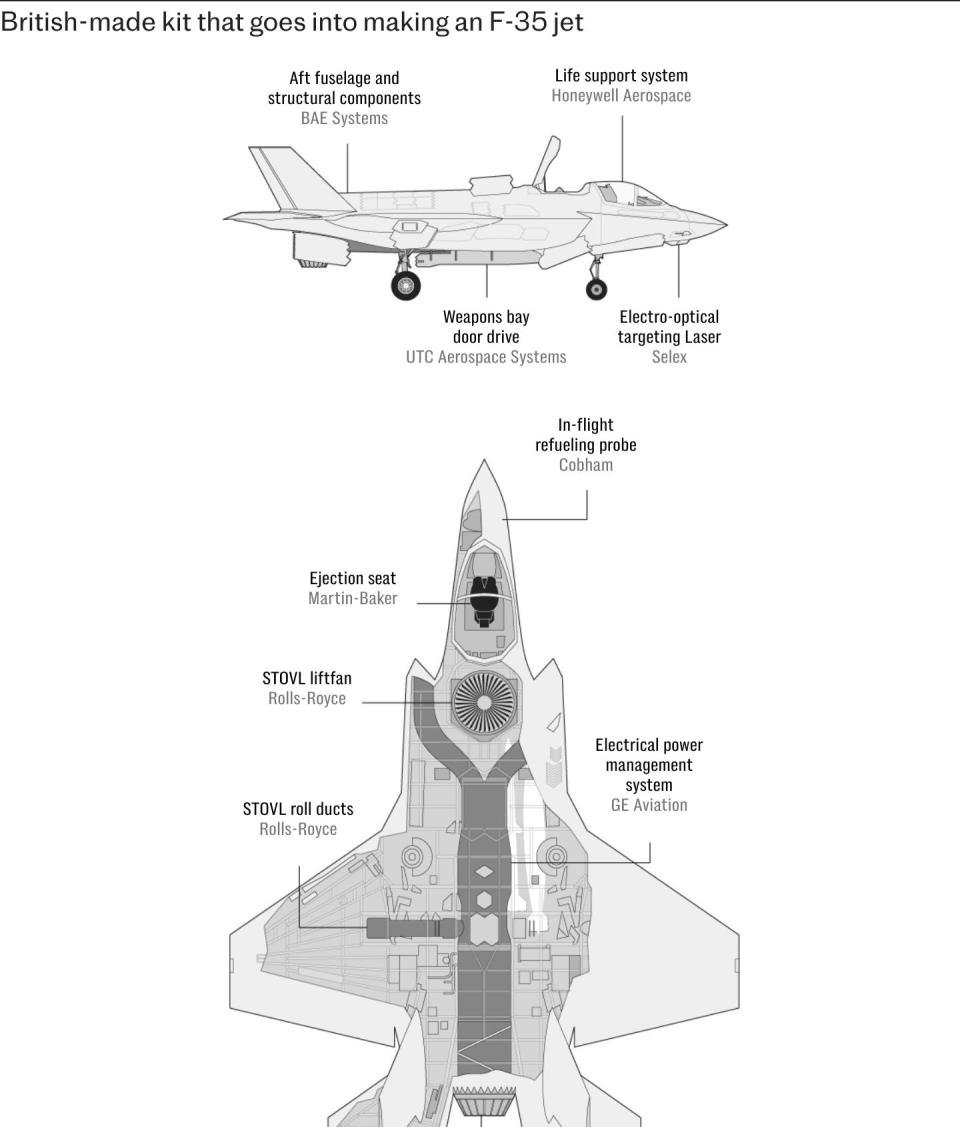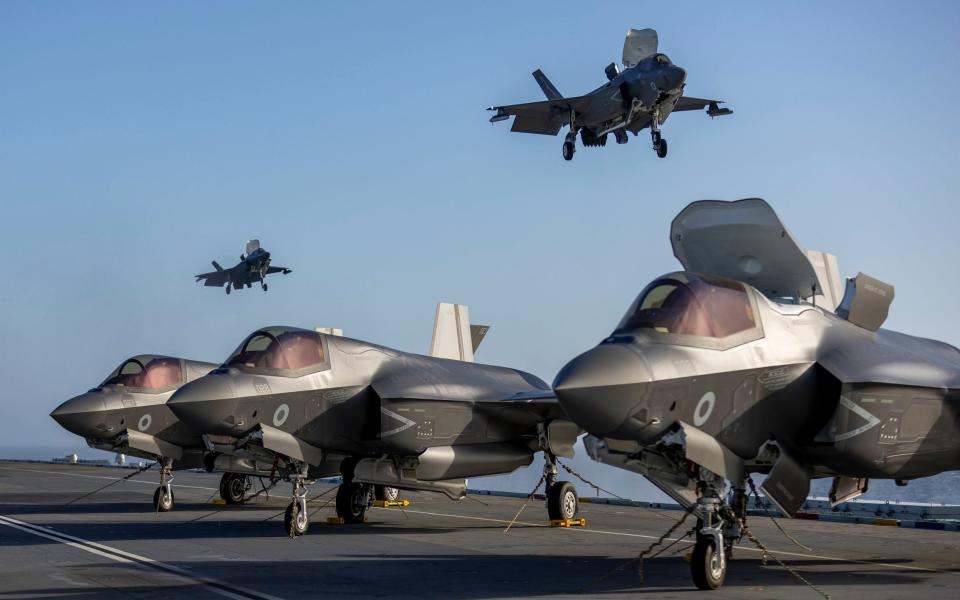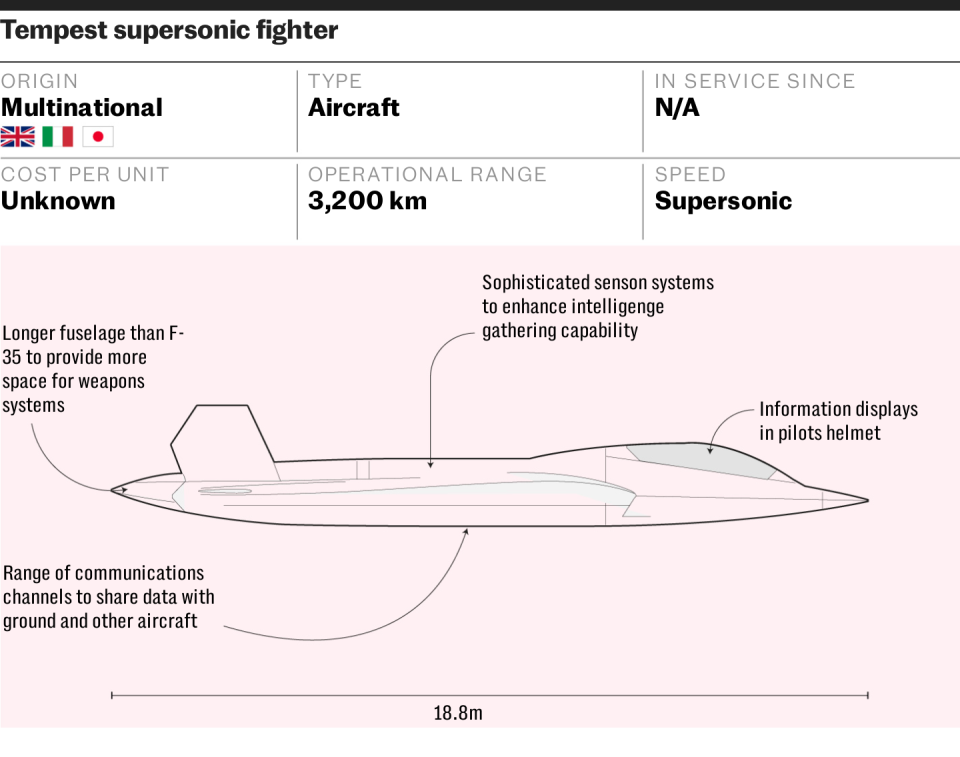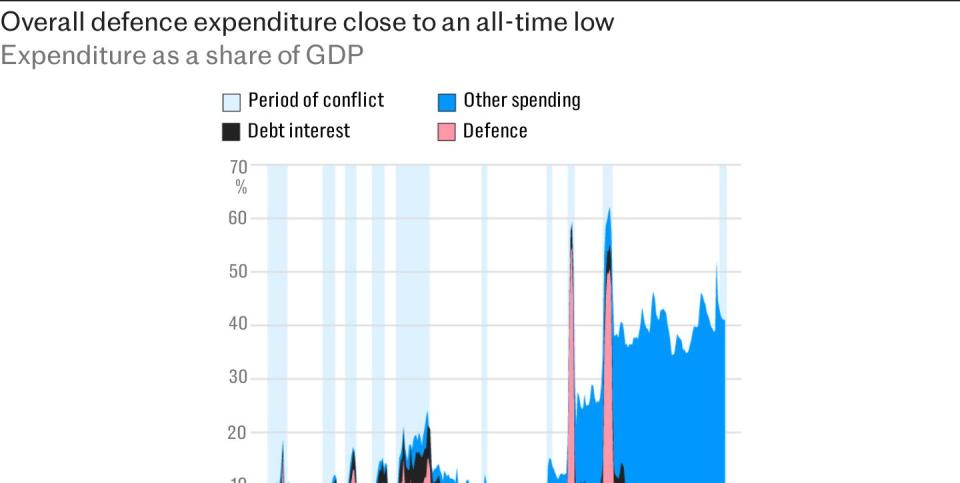As the British aircraft carrier HMS Prince of Wales sailed for the biggest Nato exercise since the Cold War, strapped to its flight deck were a clutch of the West’s most advanced fighter jets.
The American-made F-35 Lightning planes deployed that March are among the newest additions to UK air power at a time when global tensions are rising.
Described as “flying computers”, they are packed with sensors and masked by cutting-edge stealth technology to help pilots penetrate deep into hostile territory for devastating strikes and intelligence gathering.
Yet the F-35’s journey to deployment has been far from straightforward.
The jets, assembled in the US by Lockheed Martin, have been plagued by repeated delays and cost overruns, while the Ministry of Defence (MoD) has long been evasive about how many Britain will ultimately buy – and which service will own them.
Now, as the new Labour Government carries out a sweeping defence review, critics have suggested that the UK could seek to halt its purchases to save money.
It comes amid a separate row over the homegrown next-generation stealth-fighter programme, Tempest, of which Sir Keir Starmer has refused to guarantee the future.
But extricating the Government from the Tempest programme, which is underpinned by a treaty with partner nations Japan and Italy, will be far trickier politically than cutting F-35s, critics argue.


Francis Tusa, an independent defence analyst, says the fact the F-35 programme is not under the direct control of the UK will also count against it.
Compared to Tempest, “the F-35 is very much a less capable, flawed platform, with a quite stormy future, full of uncertainty”, he says.
“Sure, there isn’t yet a flying Tempest. But the three partners are in control of their destinies with it – which is not the case with F-35.”
Work on the F-35, a “fifth-generation” fighter, first began in the 1980s and has since morphed into the most expensive weapons programme in history, with an estimated lifetime costs of $2 trillion (£1.6 trillion) in the US through to 2088, according to the Pentagon.


The UK first joined in 1995, contributing some money to development costs and in the process ensuring that hundreds of British companies became suppliers.
There are three variants of the jet (A, B and C), all of which use advanced technology to identify threats and link up with other platforms digitally – including, in future, unmanned drones.
The MoD opted for the short take-off and vertical landing-capable F-35B, due to a lack of arresting wires – which catch jets as they land – on the Royal Navy’s Queen Elizabeth-class aircraft carriers.
However, this capability also makes the F-35B the most expensive version of the plane and gives it a more limited maximum range and payload than others.
According to the Government, each one costs about £90m. However, defence analyst Tusa says this does not include the engine or other costs, with the real total pitching closer to £150m per plane.


In 2015, the MoD suggested it would seek to buy 138 F-35B jets over the programme’s lifespan. But it has been reluctant to recommit to that number ever since and has only placed a firm order for 48 planes for delivery by 2025, with 34 received so far.
The previous Conservative government confirmed this year that it was in negotiations to buy another 27 for delivery by 2033, which Tusa expects to cost around £5bn. Those negotiations remain ongoing.
A spokesman for the MoD said: “Whether operating from land or onboard our aircraft carriers as a central component of the UK’s Carrier strike capability, the F-35B delivers a cutting-edge capability for the UK.
“We are committed to the F-35 programme, and the UK builds approximately 15pc of each aircraft, securing highly skilled jobs and significant economic growth within the UK.”
The spokesman added that the Government “didn’t recognise” the £5bn estimated cost for buying further jets.
Advocates, including military chiefs in the Royal Navy and the Royal Air Force, have argued that acquiring more F-35Bs is essential to bringing Britain’s aircraft carriers up to full strength, with the ability of the jets to operate from land and sea providing added flexibility.
But the programme has been beset by delays over the years, with the UK bringing them into service four years late in 2018 – and even then not at full capability.
MPs have also criticised the MoD for failing to set out exactly how many of the jets are set aside for use with the aircraft carriers, versus other uses, raising the risk of double-counting in force estimates.
In the US, the F-35 has also become something of a poster-boy for overwrought, expensive defence fiascos in some quarters.
Meanwhile, Lockheed was forced to halt deliveries globally last July, and only resumed them this month, after the US Air Force refused to accept more jets until hardware issues were fixed.


The F-35 has come under fire for being costly to operate as well. Sir Ben Wallace, a former defence secretary, previously raised concerns about this, with MPs on the defence select committee last year describing them as “unacceptably high”.
They also criticised the slow growth of the F-35B fleet and suggested exploring the possibility of bulking up Britain’s air force with unmanned drones instead.
“At present there are too many unresolved questions about the development and operational deployment of the [F-35] fleet,” the MPs said.
“The MoD must be transparent and realistic about the eventual size of the F-35 fleet … and should also make clear whether it is attributed to the Royal Navy or the RAF.”
Another criticism levelled at the F-35 is also the UK’s lack of sovereignty over the platform and its technologies, which are effectively under the control of the Pentagon.
This is one argument industry supporters of the Tempest programme deployed at Farnborough International Airshow this week, after doubts about that scheme’s future were stoked by noncommittal statements by Sir Keir and other ministers.
According to BAE Systems, Tempest will support 16,000 jobs in Britain and add £37bn to the economy, excluding potential exports.


Yet defenders of the F-35 say it is a highly capable aircraft that is proving doubters wrong, with orders flooding in from Nato countries such as Germany, Canada, Finland, Switzerland, the Czech Republic and Greece in recent years.
Deployments of F-35s in Syria against Islamic State and on Eastern Europe’s frontier with Russia were particularly effective.
Retired general Jeffrey Harrigian, the former commander of the US Air Force in Europe who is now a vice-president at Lockheed Martin, said the stealth capabilities of the jets meant those deployed to the Middle East war zone could operate with impressive freedom.
“We found ourselves in very good positions relative to the Russian airplanes that were flying around, such that if something would have come up, we were fully prepared to take care of business – and the Russians knew that,” he told reporters at the Farnborough airshow on Tuesday.
In the buildup to the Ukraine war, the US and Nato allies including the UK and the Netherlands also stationed F-35s in the Baltics to deter Russian aggression.
“We knew the Russians would know where they were. And we also knew they didn’t want to have any part of dealing with F-35s,” Harrigian said.
Professor Justin Bronk, a senior research fellow for air power and technology at the Royal United Services Institute (RUSI), says the F-35 is essential to maintaining British airpower through to the 2030s, when Tempest is expected to come online.
“I think the UK should definitely proceed with the follow-on order of 27, to take the fleet to 74,” he says. “That’s more or less the functional minimum for the fleet to meet its obligations.
“Beyond that, I don’t see much fiscal room for additional orders in the foreseeable future and, in any case, if there was additional money … I would put it into weapons and maintenance and spares, to improve the combat capability and availability.”
He is sceptical about grumbling on sovereignty with the F-35, pointing out that Britain already works with international partners on the existing Eurofighter Typhoon programme and will do so for Tempest as well.
“There are certainly some trade-offs, but I think the sovereignty issue is significantly overblown,” he adds.
“The UK doesn’t have sovereign control over the Typhoon or Tempest either, because it’s beholden to the requirements and needs of the other partner [countries] – so the idea there’s some sort of mystical sovereignty involved in any of these is fairly obviously not true.”
Meanwhile, the F-35’s contribution to the British economy should not be underestimated, either.
More than 800 domestic companies work on the programme including ejector seat maker Martin Baker and Rolls-Royce, which makes the F-35B’s vertical lift system.
According to Lockheed, it has generated an estimated £45bn of exports so far for the UK and is expected to support up to 20,000 British jobs over its lifetime.
James Cartlidge, a former Conservative defence procurement minister and now shadow defence secretary, believes seeing Tempest and the F-35 as opposing choices is a false dichotomy.
He says Labour should announce a timeline for reaching 2.5pc of GDP in defence spending by 2030, as the Conservatives did during the election, and shut down doubts about funding.


“If Labour commits to that, you can order the F-35s and invest in [Tempest], which gives you the best of both worlds,” he says.
Lockheed Martin adds that the F-35 is “currently the fighter of choice for Nato and its allies and will be a cornerstone of the defence and security in Europe for decades to come”.
But defence analyst Tusa believes Labour’s review may yet throw out some bombshell recommendations.
Lord Robertson, the former Nato secretary general who is leading the exercise and who as Labour defence secretary oversaw a similar one in the 1990s, is “no patsy”, Tusa says.
For example, depending on whether he recommends focusing more exclusively on Europe and Britain’s Nato commitments – ditching Boris Johnson’s Indo-Pacific “tilt” – even HMS Prince of Wales and her sister carrier, HMS Queen Elizabeth, could be at risk.
That may ultimately mean fewer F-35s as well.
“There have to be cuts somewhere because the current system is unaffordable,” Tusa adds.
“And there will be squeals of outrage. But what can you say? There’s no choice.”
Broaden your horizons with award-winning British journalism. Try The Telegraph free for 3 months with unlimited access to our award-winning website, exclusive app, money-saving offers and more.
